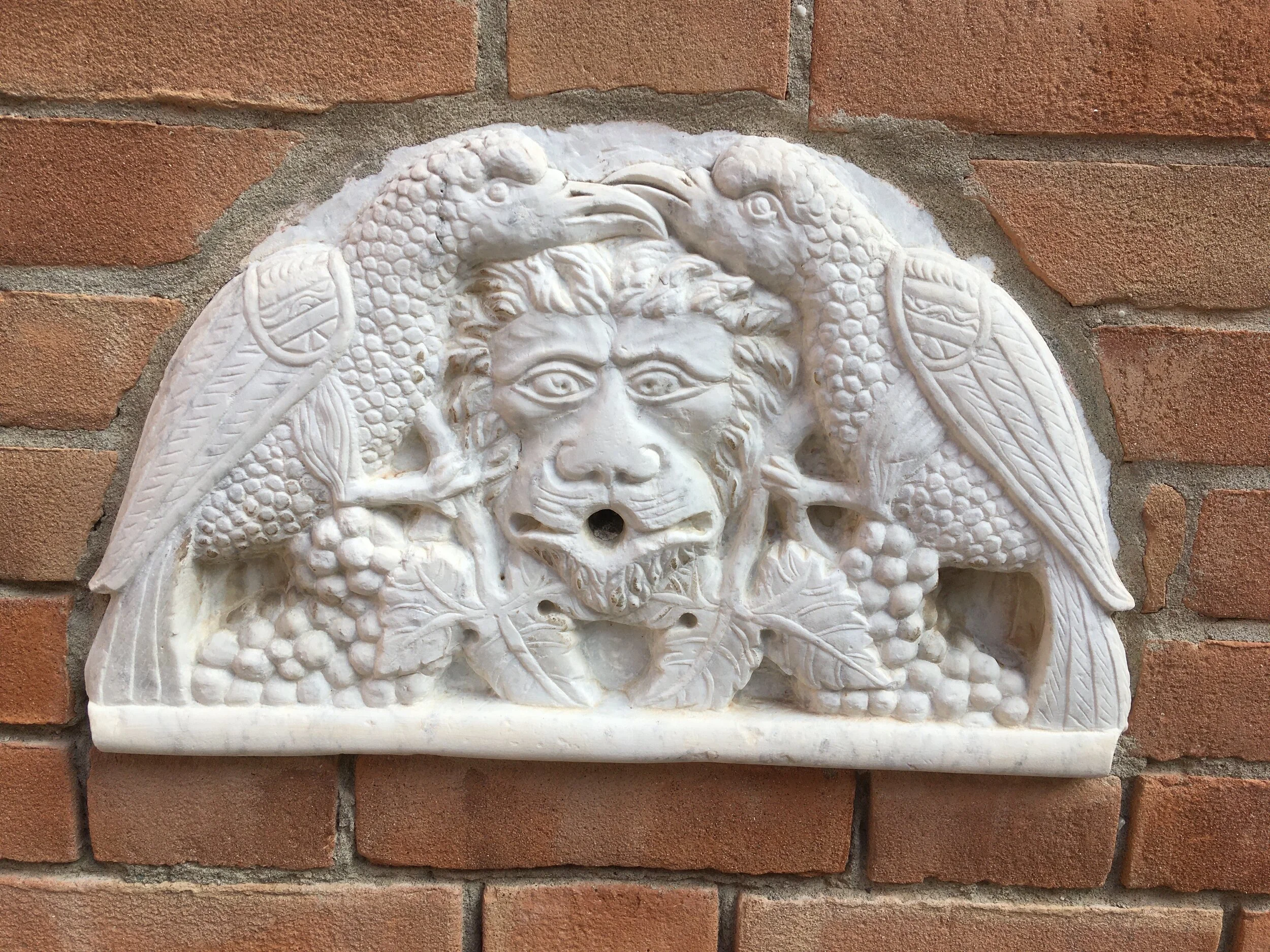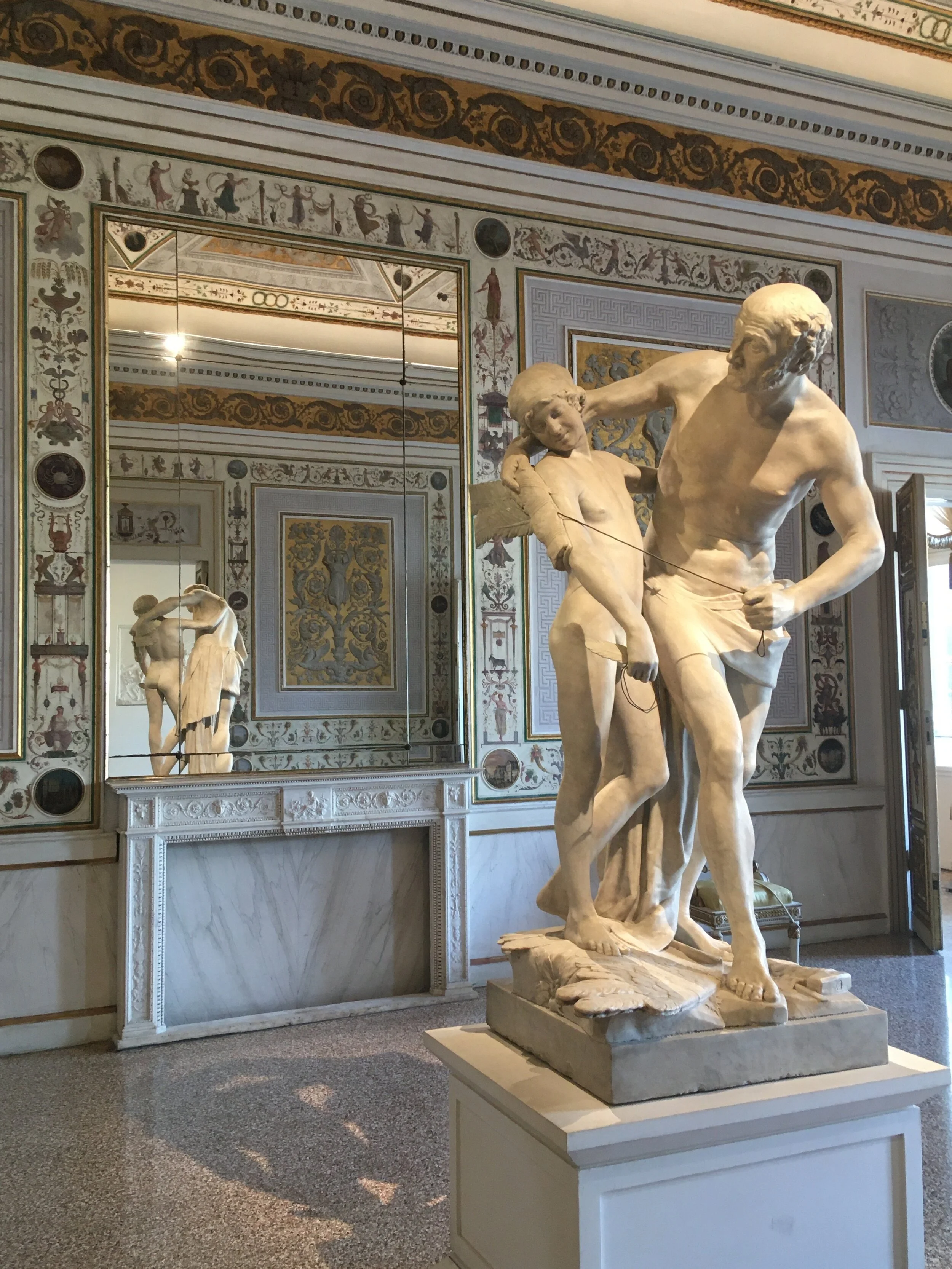Venice visits
St Mark's Square from the cafe at Museo Correr
After a rewarding few days spent at the biennale earlier this month, I had the joy of a few extra holiday days in Venice. As I’m lucky enough to have been before (you can read about a previous biennale visit here), as has my husband, we continued our successful approach in Paris, Budapest and Vienna earlier this year, and focused on the lesser-known museums and attractions. This opened up some gems to us, as always.
We decided to make the most of a pass that combined visits to all of the Fondazione Musei Civici di Venezia, including the wonderful Doge's Palace. First up was the Museo Correr, surprisingly quiet given it takes up over half of the palace buildings that surround three sides of St Mark’s Square, including a café with fabulous views of the basilica and campanile. The Museo is housed in rooms originally built by Napoleon, and remodelled by the Hapsburgs, notably Austria’s most famous princess, Sissi. Your visit first takes in these imperial rooms, including a ball room and Sissi’s private bathroom. Next, you encounter an exhibition on Venice’s most famous Doge – Franceso Morisini – also a heroic admiral, whose collections tell the rich story of the city, including books, prints, paintings, coins and medals, ship models, weapons and more.
From here, you enter the neighbouring National Archaeological Museum, stuffed with fabulous sculpture, and straight on into the glorious Biblioteca Nazionale Marciana, one of the earliest surviving public libraries. Looping back around and up to the second floor, the Museo’s picture collection takes you from the earliest Venetian painting to the 16th century, including currently a striking contemporary intervention by Chiara Dynys, which displays photographs from refugee camps in Lebanon in the form of triptych icon paintings. Lastly, you reach the Canova collection, including an extraordinary cabinet to the memory of the sculptor, a kind of lay reliquary of his work. All this for one museum visit!
Another superb discovery was the Museum of Natural History, housed in a palazzo on the Grand Canal, that was home to the Turkish merchants in Venice until 1838. The strikingly displayed galleries start with beautifully-lit fossils and paleontology specimens, before taking you on through displays in the style of a ‘cabinet of curiosity’ and enlightenment library that look at the history of the museum’s collection and the discipline of natural history.
An impressive interactive room then allows you to consider the world’s flora and fauna through your own choice of categories – use of the senses, means of movement, colours etc – before going on into a series of rooms on form and functions in living things, including displays on moving on land, in water and in the air. Lastly, the itinerary takes you into a basement aquarium that reconstructs the unique aquatic life of the Venetian lagoon. Considering the labels are almost exclusively only in Italian, we had a wonderful time at this museum. My only concern (again tempered by language barriers) was over the collecting rooms that focused on related ethnographic collecting, which seemed to show no engagement with the communities whose cultures and ancestors appear there, and evoked a colonial style with little self-reflection.
Our ticket also took in the much smaller museums on Murano and Burano, dedicated to the islands predominant industries of glass and lace making, respectively. These give you the chance to see some gorgeous historic examples, as well as the crafts’ contemporary developments, and to understand how these small islands served and shaped the extravagant decorative tastes of nobilities across Europe.
On our last day, we joined a tour of the Clock Tower in St Mark’s Square (also discounted with the museum pass), which was a fabulous experience. Not only do you discover the workings of this extraordinary astronomical clock as you climb up the tower, you see the wooden figures of the angel and three Magi who appear out of the clock doors for Epiphany and Ascension Day, and climb right up to the two ‘moors’ who strike the bell every hour. From two terraces just underneath the bell you get breath-taking views of St Mark’s Square and out onto the lagoon. It is amazing to think that this tower was also home to a live-in clockmaker and their family until 1998.
We could have taken in a further feast of small collections among the Civic Museums, but chose also to visit some of the city’s beautiful churches. Along with the Doge's Palace and Museo Correr, this was certainly a feast of painted and gilded ceilings. Perhaps most glorious is the Scuola Grande di San Rocco, attached to the near-by church, which houses a cycle of paintings by Tintoretto. The neighbouring huge gothic Frari houses extraordinary choir stalls, as well as altar pieces by Titian, the painter’s tomb, and the tomb of Canova.
Onwards from there to the baroque splendour of Salute, built as a votive offering for Venice to be delivered from the plague, and the beautiful island church of San Giorgio Maggiore designed by Palladio. From here there are fabulous views back across the lagoon to St Mark’s. Most surprising for us, as discovered quite by chance, are the extraordinary interiors of I Gesuiti, to the north of the island, entirely covered with inlaid marbles to look like damask hangings and rich carpets. Also worth a mention is the Isola di San Michele, an island entirely devoted to a cemetery, with the old monastic cloisters alongside a striking basalt extension by David Chipperfield architects, and the graves of Stravinsky and Diaghilev.
Not all of these are lesser-known gems, but wandering around Venice, exploring these smaller museums and churches, helped us to discover whole streets and areas beyond the main tourist zones, quiet spaces with drying washing and sun-bathing cats, that help to build a picture of modern life alongside the extraordinary artistic and political histories of this unique republic.

































































































